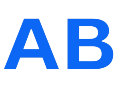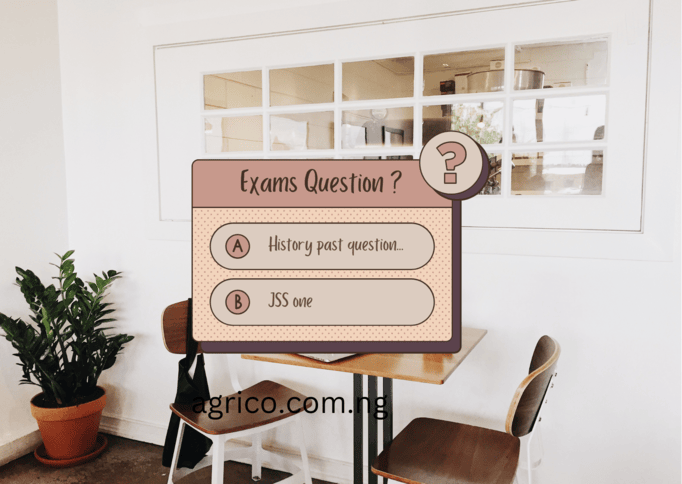JSS3 History Examination Questions- Mock past questions for the academic session. Also get a detailed History lesson plan and note for first and second term JSS1.
SECTION A: OBJECTIVES
- “Trans” means _______ A beside B over C across D under
- One of the things that influenced the Trans Saharan trade was A. Islam B. money C. dressing D. sports
- A place where one can find water in the desert is known as ________ A lake B river C stream D oasis
- Sahara refers to ______ A wilderness B. jungle C desert D bush
- The people of West Africa were referred to as ______ during the Trans Saharan trade A Negroes B. Berbers C. Arab D Whites
- The people of North Africa were referred to as ______ during the Trans Saharan trade A Negroes B. Berbers C. Arab D Whites
- Traders that travels across the Sahara are known as A. caravans B. sailors C. scholars D. migrants
- Islam was introduced in the Northern part of Nigeria in what century? A. 9th Century B. 10th Century C. 11th Century D. 12th Century
- There are _______ routes across the Sahara A. 2 B. 3 C 4 D 5
- All these are commodities of trade during the Trans Saharan trade except_______ A salt B gold C horses D wood
- Which of these is not in North Africa? A Tunisia B Egypt C Mali D Libya
- One of the important of History is that it_______ A help us to make more errors B. it helps us to know about the past C. it helps us to be physically fit D. it increases our weight
- Historical items dug from the ground are known as A. gold B. artifacts C. jewel D. diamonds
- Which of these is not a type of sources of History? A. primary source B. secondary source C. tertiary sources D. major sources
- Ile Ife is located in which state in Nigeria A. Ondo B. Ogun C. Osun D. Ekiti
- Historical source of History that is transmitted from one generation to another with the use of spoken words is known as_________ A. oral tradition B. interview C. folklore D. legends
- Which of these ethnic groups are located in the coastal area? A. Benin B. Tiv C. Igbo D. Ijaw
- _____ is skilled in the digging out of the ground ancient items A. sociologist B. Archeologist C. Engineer D. Hunter
- Which of the following countries colonized Nigeria? America B Belgium C China D Britain
- Which of these following animals was used as means of transportation during the Trans Saharan Trade? A donkey B horse C ox D camel
- Slavery led to the _______ of African nations A. richness B. depopulation C overpopulation D economic growth
- Slaves taken to America were used for the following except _______ A as domestic servants B to work on sugarcane plantation C sold for money D as soldiers to fight wars
- The ending of slave trade is known as A abolition B enslavement C disabilities D none of the above
- Mungo Park died in a place called _______ in 1806 A Jos B Bussa C Kwoi D Birom
- People who write and study History is known as ________ A. historiography B. biographers C. historians D. historicas
- ______ translated the English Bible to Yoruba and Igbo A Samuel Ajayi Crowther B K O Dike C Ade Ajayi D Toyin Falola
- The West Africans traded in all these commodities during the Trans Saharan trade except A mirror B bronze C gold D slaves
- The Trans Saharan trade was aided greatly due to the introduction of A horses B camels C rail lines D aircraft
- The Trans Saharan trade was also known as _____ A Trans Atlantic trade B Caravan trade C Camel trade D slave strade
- Camels were introduced to North Africa from A. Asia B. Europe C. North America D. Australia
- The first sets of Europeans to have contacts with Nigeria were the _______ A Portuguese B Germans C British D Italians
- The Trans Atlantic slave trade was ______in its movement A circular B triangular C spherical D rectangular
- _______ is regarded to have stopped the killing of twins in Calabar A Birch Freeman B Henry Townsend C Mary Slessor D Richard Lander
- All these except________ were all European Explorers in Nigeria A Mungo Park B Mary Slessor C Napoleon Bornaparte D the Lander Brothers
- The Northern and the Southern protectorates of Nigeria were joined together in A 1914 B 1915 C 1916 D 1917
- The British formed the African Association in A 1785 B 1786 C 1787 D 1788
- The traditional head of Ile Ife is known as ______ A Ooni B Alaafin C Alaake D Emir
- A place where one can find water in the desert is known as ________ A lake B river C stream D oasis
- The capital of present day Ghana is A Lagos B Abijan C Accra D Banjul
- _____ inspired the exploration of the Portuguese in West Africa A King Paul B Prince Henry C Prince Collins D King Fredrick
SECTION B: THEORY Answer All Questions
- What are the peculiarities of these following European and African Explorers in Nigeria?
- Mungo Park
- Mary Slessor
- Thomas Birch Freeman
- Reverend Henry Townsend
- Sir George Taubman Goldie
- Samuel Ajayi Crowther
- Explain the Trans Atlantic Slave Trade
b. State 5 effects of the Trans Atlantic Slave trade in West Africa
- Explain the Trans Saharan Trade
b. State 5 effects of the Trans Saharan trade in West Africa
JSS1 History Lesson Plan For Week One Ending
Week: 1
Date: 4th September
Class: Year 7
Subject: History
Lesson Title: Revision of last term’s work
Sub Title: Revision of last term’s work
Duration: 40mins
Learning Objective: At the end of the lesson, students should be able to:
i. Narrate the origin of Hausa state
ii. Explain the factors that led to the growth of the Old Oyo Empire
iii. Explain the role of Tseode Edegi in the formation of Nupe Kingdom
Resources and Materials: Sola Akinyemi, Bamidele Ajongbade, Jeffrey Oletu (2022), Fundamentals of History For Basic 8 (JSS 2), Lagos: Fatsoholy Ventures.
ii. Temitope James O. (2019), Mastering History for Basic Schools (JSS 2), Lagos: Owolan Publishing Co.
Reference for further reading: Sola Akinyemi, Bamidele Ajongbade, Jeffrey Oletu (2022), Fundamentals of History For Basic 8 (JSS 2), Lagos: Fatsoholy Ventures.
Teaching Method: Discussion
Cooperative Teaching Activity:
Content:
Also refer to the biography of prominent people
REVISION OF LAST TERM’S WORK
Strategies and Activities:
Step 1- The teacher revises the topics taught last term
Step 2- She summarizes each topic, explaining the salient points
Step 3- The students ask and answer questions
Set Induction: The teacher asks the learners to state some challenges they encountered during the last term’s examination.
Assessment: Explain the factors that led to the rise of the Old Oyo Empire.
Wrap up – The teacher summarizes the lesson by explaining key concepts.
Assignment: Outline three factors that led to the fall of Kanem Borno Empire.

